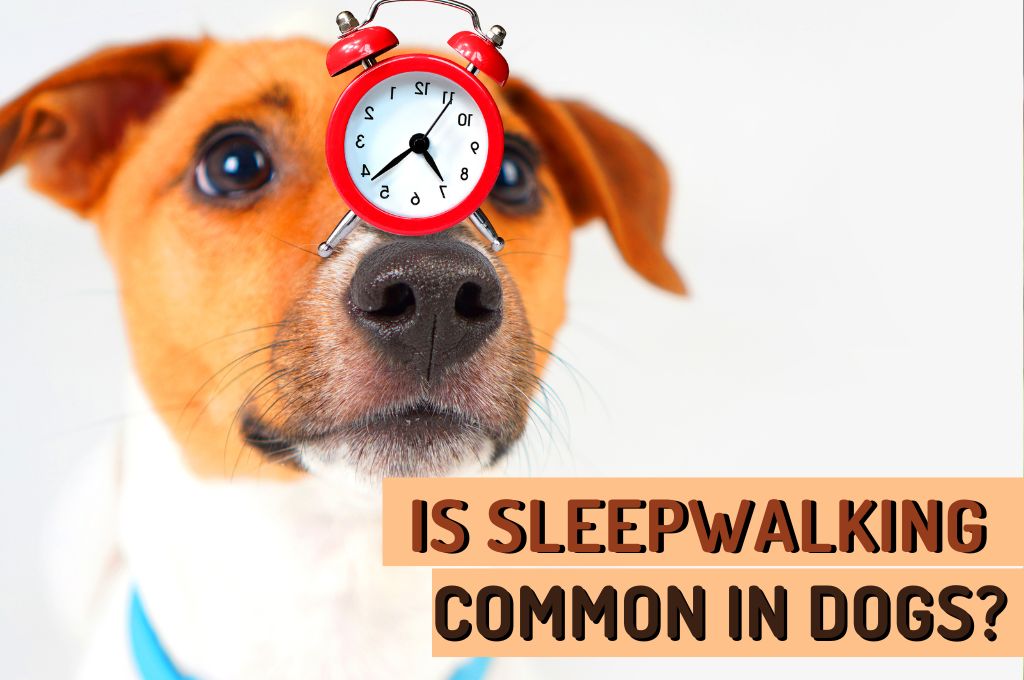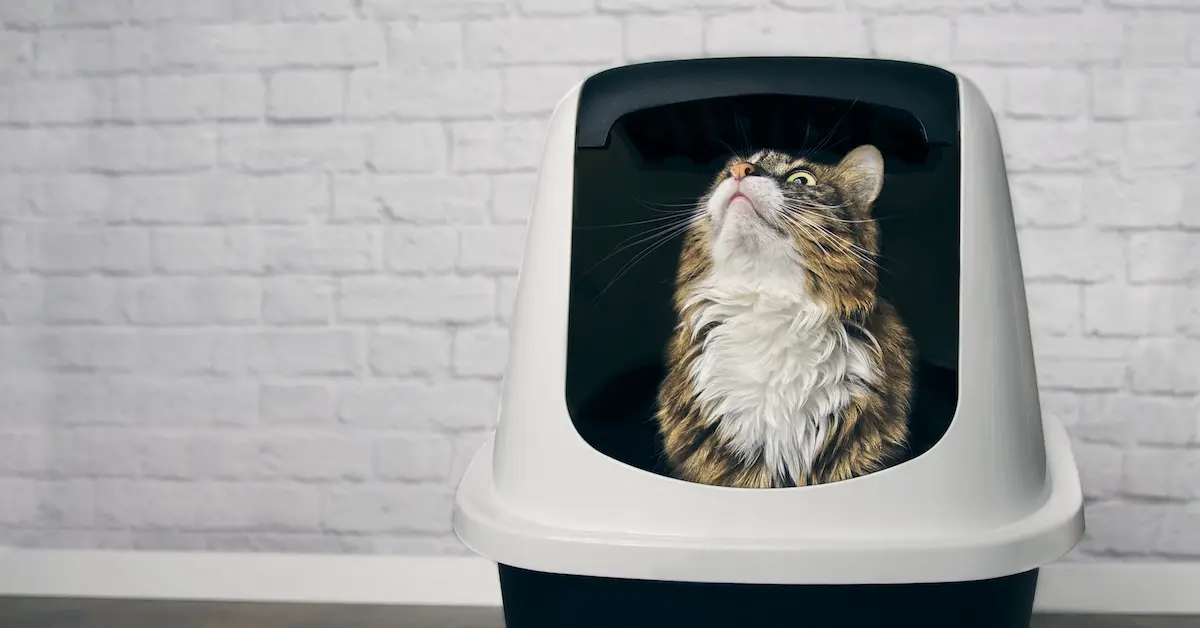Dogs cannot sleepwalk. There is no scientific evidence to support sleepwalking in dogs.
While animals may move and vocalize during certain sleep stages, sleepwalking, as defined in humans, is not observed in dogs. Despite dogs occasionally moving their limbs and barking during sleep, sleepwalking as understood in humans has not been found in dogs.
Although animals can dream and display some movements during certain sleep stages, true sleepwalking, in which an individual engages in coordinated activity similar to waking behavior, has not been observed in dogs. If you notice any unusual sleep behavior in your dog, it’s best to consult a veterinarian to rule out any underlying health issues or concerns. However, instances of dogs sleepwalking are extremely rare, and most of the movements they exhibit during sleep are typically random and uncoordinated.
Exploring Canine Sleepwalking
Have you ever observed your four-legged friend moving around the house while seemingly still in a deep slumber? Many pet owners have puzzled over the strange phenomenon of canine sleepwalking. While often overlooked, the topic of dogs engaging in sleepwalking has gained attention in recent years. In this segment, we’ll uncover insights from research, as well as compare canine sleepwalking with its human counterpart.
Insights From Research
According to studies, while dogs do exhibit certain behaviors during sleep that resemble sleepwalking in humans, these are not classified as true sleepwalking. Research indicates that dogs may engage in dreamlike motions and vocalizations during REM sleep, often associated with sleepwalking in humans. However, these movements are typically considered to be random and not purposeful, differentiating them from the complex behaviors seen in human sleepwalking.
Comparison With Human Sleepwalking
When comparing canine sleepwalking to human sleepwalking, it’s important to note that the manifestations differ significantly. Human sleepwalking is marked by complex and purposeful behaviors such as walking, eating, or even driving, while in a state of deep sleep. On the other hand, canine sleepwalking involves simple movements, often related to dream activity during REM sleep, and is considered to be less complex and purposeful than human sleepwalking.
Unveiling The Mystery Behind Dogs’ Night-time Behaviors
Have you ever wondered what goes on in your dog’s mind when they sleep? Dogs, like humans, experience different sleep stages, including REM (Rapid Eye Movement) sleep, which is associated with dreaming. But can dogs sleepwalk? Let’s dive into the fascinating world of dogs’ night-time behaviors and uncover the truth behind their mysterious actions.
Dreaming Behavior In Dogs
During REM sleep, dogs often display various dream-related behaviors, such as twitching their paws, wagging their tails, or even softly barking. These actions indicate that dogs are experiencing vivid dreams, which may be influenced by their daytime activities and interactions.
While we can’t be certain about the content of their dreams, these actions suggest that dogs may be reenacting their daily adventures, such as chasing squirrels or playing fetch at the park. It’s an adorable sight to witness your furry friend quietly chasing an imaginary ball in their sleep. So, next time you observe these dream-like behaviors, rest assured that your dog is relishing their dreamland adventures.
Potential Causes Of Night-time Activities
Although dogs can dream and act out their dreams, sleepwalking remains a mystery to them. Research suggests that unlike humans, dogs are unable to sleepwalk. The random small movements we witness during their sleep are merely a result of their dreams rather than purposeful actions.
So, why do dogs exhibit these night-time activities? There could be several underlying factors at play, including stress and anxiety. Dogs can become restless and display repetitive behaviors if they’re feeling uneasy or experiencing changes in their environment. Additionally, senior dogs may pace at night due to cognitive dysfunction, leading to confusion and increased movement during sleep.
However, it’s important to note that these night-time behaviors are typically harmless and a natural part of your dog’s sleep cycle. If you’re concerned about your dog’s behavior or suspect something more serious, it’s always wise to consult your veterinarian for a professional assessment.
While dogs may not sleepwalk, they certainly can dream and exhibit dream-related behaviors during their sleep. These behaviors add a touch of charm and wonder to the already fascinating world of our four-legged companions. So, the next time you catch your furry friend wagging their tail or softly barking in their sleep, know that they’re savoring their dream adventures in their own delightful way.
Understanding Canine Sleep Disorders
Can dogs actually sleepwalk? While dogs may exhibit dreamlike behaviors such as running or vocalizing during sleep, true sleepwalking, as seen in humans, does not occur in dogs. These movements are typically random and not purposeful, often reflecting dream activity rather than conscious behavior.
Overview Of Common Sleep Disorders In Dogs
Dogs, just like humans, can experience various sleep disorders that affect their quality of rest. While sleep disorders in dogs are not as extensively studied as in humans, there are some common sleep issues that pet owners should be aware of. Here are a few common sleep disorders that can affect dogs:
- Insomnia: This sleep disorder occurs when a dog has difficulty falling asleep or staying asleep. It can be caused by factors such as anxiety, discomfort, or underlying medical conditions.
- Sleep Apnea: Similar to humans, dogs can also suffer from sleep apnea, which is characterized by pauses in breathing during sleep. This condition can lead to poor sleep quality and daytime fatigue.
- Narcolepsy: Dogs with narcolepsy experience sudden and uncontrollable episodes of falling asleep during the day. These episodes are often triggered by emotional excitement or stress.
- REM Behavior Disorder: Dogs with REM Behavior Disorder act out their dreams during REM sleep. This can result in behaviors such as vocalizations, running, or even aggressive movements.
Identifying Signs Of Sleep Disorders In Dogs
Identifying if your dog is experiencing a sleep disorder can be challenging, as they can’t communicate their discomfort directly. However, there are some signs that may indicate the presence of a sleep disorder in your furry friend. Look out for the following signs:
- Excessive Daytime Sleepiness: If your dog seems excessively tired during the day or frequently naps, it could be a sign of a sleep disorder.
- Restlessness or Agitation: Dogs with sleep disorders may exhibit restlessness, pacing, or constant shifting during sleep. They may also have difficulty settling down.
- Loud Snoring: While occasional snoring is normal for some dogs, loud and persistent snoring could be a symptom of a sleep-related breathing disorder.
- Abrupt Wake-Ups or Strange Behaviors: Dogs with sleep disorders may wake up abruptly, appear disoriented, or engage in unusual sleep-related behaviors like sleepwalking.
If you notice any of these signs, it’s important to consult with your veterinarian for a proper diagnosis. They can evaluate your dog’s sleep patterns and behavior to determine if a sleep disorder is present and develop an appropriate treatment plan.
Understanding and addressing sleep disorders in dogs is important for their overall well-being. By being aware of the signs and seeking veterinary guidance, you can help ensure that your furry friend gets the restful sleep they need for a happy and healthy life.

Credit: www.youtube.com
Case Study: Bizkit – The Sleep Walking Dog
Have you ever wondered if dogs can sleepwalk? Meet Bizkit, an adorable black Labrador from Austin, Texas, known for his unusual nighttime behaviors. Bizkit has become an internet sensation due to his peculiar sleepwalking episodes, leaving many pet owners pondering the question: Can dogs really sleepwalk?
Bizkit’s Story And Videos
Bizkit’s owners, Sarah and Mike, first noticed his sleepwalking tendencies when they heard him whimpering and moving around the house at night. Concerned about his well-being, they set up a camera to monitor his behavior. The footage revealed Bizkit wandering aimlessly, bumping into furniture, and even attempting to go outside—all while fast asleep.
These captivating videos of Bizkit’s nighttime escapades quickly gained attention on social media, sparking a wave of curiosity and fascination surrounding the concept of canine sleepwalking.
Analysis Of Bizkit’s Sleepwalking Behavior
Experts have been analyzing Bizkit’s sleepwalking behavior to understand this perplexing phenomenon. It is believed that certain dogs, like Bizkit, may experience a form of parasomnia, a sleep disorder characterized by abnormal movements or behaviors during sleep.
Although rare, cases like Bizkit’s shed light on the complexity of canine sleep patterns and behaviors, prompting further research into the topic of sleep disorders in dogs.
Do Cats Share Similar Sleepwalking Traits?
While dogs may exhibit running and barking during sleep, they do not truly sleepwalk like humans. These movements are typically random and do not indicate actual sleepwalking behavior. Cats, on the other hand, do not show sleepwalking traits as seen in humans.
Comparative Analysis With Canine Sleepwalking
Can dogs actually sleepwalk? Although dogs can have vivid dreams, they do not experience true sleepwalking episodes like humans.
Observations On Feline Sleep Behaviors
Felines, on the other hand, exhibit various intriguing sleep behaviors that may seem similar to sleepwalking, such as twitching and vocalizing during sleep.
Cats do not fully engage in sleepwalking; however, they display behaviors that might mimic aspects of sleepwalking, presenting an interesting comparison to canine sleep behaviors.

Credit: www.youtube.com
Decoding Dog Dreams: What Do They Dream About?
Can dogs sleepwalk or do they dream while they snooze? Understanding what goes on in a dog’s mind during slumber can offer insights into their behaviors and provide a glimpse into their dream world.
Insights Into Dog Dreaming Patterns
Dogs experience various stages of sleep, including Rapid Eye Movement (REM) sleep, where dreams are most likely to occur. During this stage, dogs may exhibit physical movements, such as kicking, twitching, or vocalizations, indicating they are likely dreaming.
Interpreting Dog Dreams And Behaviors
While we can’t definitively know what dogs dream about, their behaviors during sleep can provide clues. Dogs may bark, whine, or move as if running or playing, possibly reflecting their daytime activities or desires. It’s fascinating to observe these dream-like behaviors and imagine what scenarios might be playing out in their minds.
Addressing Night-time Behavior Issues In Dogs
Dogs are known for their peculiar behaviors, and night-time activities can sometimes pose a challenge to pet owners. Understanding and addressing these behaviors is crucial in ensuring a peaceful night’s rest for both the dog and its human family members. One such behavior that may raise questions is sleepwalking in dogs. While it may seem like an unusual occurrence, there are ways to handle and improve this behavior for a better sleeping experience for your furry friend.
Solutions For Excessive Night-time Activities
When it comes to managing excessive night-time activities in dogs, there are several strategies that can be effective:
- Provide regular exercise and mental stimulation during the day to help reduce restlessness at night.
- Establish a consistent bedtime routine to signal to your dog that it’s time to wind down for the night.
- Ensure the sleeping environment is comfortable, quiet, and free from distractions that may trigger night-time activities.
- Consult a veterinarian to rule out any underlying medical conditions that could be contributing to the behavior.
Tips For Improving Canine Sleep Quality
Improving your dog’s sleep quality can have a positive impact on its overall well-being. Here are some tips to help your dog achieve better sleep:
- Allocate a designated sleep area for your dog, providing a cozy and comfortable bed.
- Avoid disturbances during your dog’s designated sleep time, ensuring a peaceful and uninterrupted rest.
- Consider using calming aids such as lavender diffusers or soothing music to create a relaxing atmosphere for your dog’s sleep.
- Engage in calming activities before bedtime, such as gentle massage or quiet play, to help your dog relax and prepare for sleep.
Conclusion: The Fascinating World Of Canine Sleep Patterns
In the fascinating world of canine sleep patterns, dogs may exhibit random small movements while asleep, but they are unable to sleepwalk like humans. Dreaming usually occurs during REM sleep, which can lead to dogs “running” and barking in their sleep.
Final Thoughts On Canine Sleepwalking
Can dogs sleepwalk? This intriguing question has captivated the curiosity of many pet owners. While animals can dream and even exhibit slight movements during certain stages of sleep, research suggests that sleepwalking, as observed in humans, is not a behavior commonly seen in our canine companions.
Implications Of Understanding Dog Sleep Behaviors
Understanding dog sleep behaviors can have significant implications for pet owners. By recognizing the normal physiological and behavioral patterns of canine sleep, pet owners can better interpret their dog’s actions and provide appropriate care and support. Here are a few key implications of understanding dog sleep behaviors:
- Promoting Optimal Sleep: Dogs, like humans, require sufficient rest to maintain their overall health and well-being. Recognizing and respecting their sleep needs can help pet owners create a comfortable and quiet sleeping environment for their furry friends.
- Identifying Sleep Disorders: Just like humans, dogs can experience sleep disorders that may affect their quality of sleep. Being aware of common sleep disorders in dogs, such as sleep apnea or restless leg syndrome, can prompt pet owners to seek veterinary intervention if necessary.
- Enhancing Bonding Opportunities: Observing your dog’s sleep patterns can provide valuable insights into their preferences and behaviors. For example, noticing if your dog enjoys cuddling up with a blanket or prefers a specific sleeping position can help strengthen the bond between you and your furry companion.
- Monitoring Overall Health: Changes in sleep patterns can sometimes indicate underlying health issues in dogs. By keeping track of their sleep behaviors, pet owners may be able to detect any abnormalities and seek veterinary advice if necessary.
In conclusion, while sleepwalking may not be a common phenomenon in dogs, understanding their sleep patterns can offer a wealth of insights into their well-being and behaviors. By paying attention to their sleep behaviors, we can provide the best care and support for our beloved canine friends.

Credit: www.woofblankets.com
Frequently Asked Questions
Can Animals Sleepwalk?
According to research, animals are unable to sleepwalk. They may move their limbs and vocalize during certain sleep stages but not in a coordinated manner.
Can Dogs Sleep Walk And Bark?
Dogs can’t sleepwalk like humans, but they may exhibit random movements while dreaming, such as running and barking.
Can Dogs Dream Walk?
Dogs cannot sleepwalk like humans. They may exhibit random movements, but it’s not true sleepwalking behavior.
Why Does My Dog Walk At Night?
Dogs may walk at night due to stress, discomfort or cognitive dysfunction. Stressful situations or changes in their environment can affect their sleep schedule. Older dogs may also pace at night due to confusion. It’s important to address any underlying issues to help your dog sleep better.
Conclusion
While dogs exhibit various sleep-related behaviors, such as running, barking, or twitching, there is no scientific evidence to support the notion that they can actually sleepwalk in the way humans do. However, it’s essential for pet owners to monitor any unusual behaviors in their dogs during sleep and seek professional advice if necessary.
Understanding our pets’ sleep patterns can help us provide them with the best care and ensure their well-being.





One Response